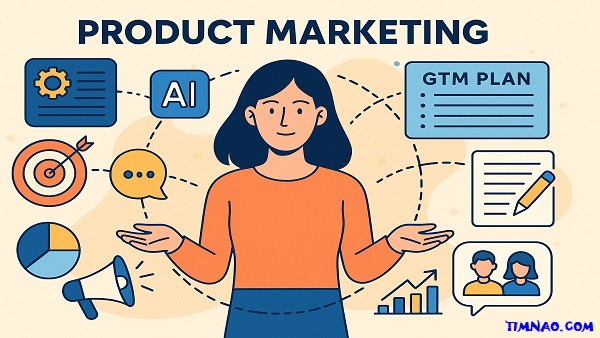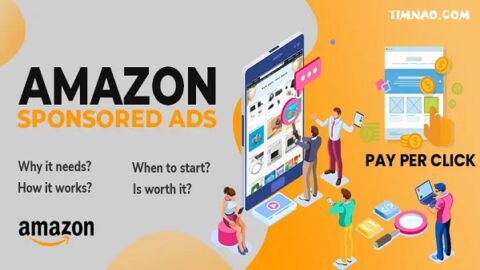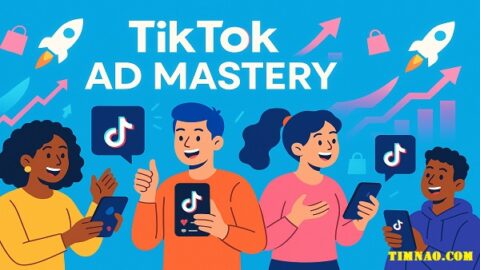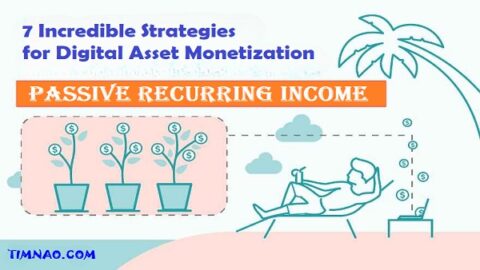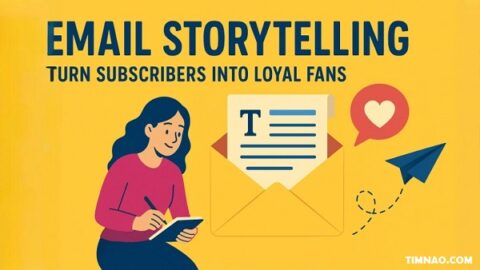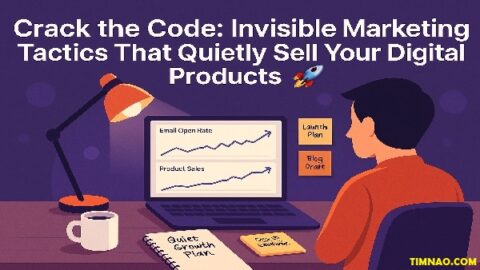Why Most Product Marketing Fails—and How to Win Big in 2025 🚀
Product marketing is one of the most powerful—and misunderstood—disciplines in the modern business world. Whether you’re launching a brand-new startup or scaling a SaaS product to the next level, great product marketing can be the difference between rapid growth and total silence.
But here’s the truth: product marketing isn’t just about creating hype. It’s about understanding your audience, crafting a crystal-clear message, and delivering the right story at the perfect moment. And in 2025, where markets move faster and competition is fiercer than ever, mastering these skills isn’t optional—it’s essential.
If you’re a beginner eager to break into product marketing or a marketer looking to level up, this comprehensive guide will give you everything you need to succeed—from the fundamentals to the future trends you can’t afford to ignore.
Let’s dive into the exact strategies, tools, and tactics that can help you win big in today’s product-led world.
📚 Table of Contents
- 🚀 What Is Product Marketing Really About?
- 🎯 The Core Pillars: What Every Beginner Must Know
- 🧭 Product Marketing vs. Other Roles: Clearing the Confusion
- 📊 How to Do Market & Competitive Research That Matters in 2025
- 🧠 Positioning & Messaging: Crafting Your Product’s Identity
- 📦 Building a Go-To-Market (GTM) Plan That Works
- 📝 Storytelling & Content Strategy: Winning Hearts and Minds
- 🛠️ Sales Enablement: Fueling Revenue from the Ground Up
- 🤝 Cross-Functional Collaboration: Becoming the Glue That Binds
- 📈 KPIs & Metrics: Measuring What Actually Moves the Needle
- 🌱 Growing as a Product Marketer: Personal Development Tips
- 🤖 Embracing AI & Tech Tools to Stay Ahead
- 🛤️ Career Paths in Product Marketing: Where Can You Go Next?
- 🔮 The Future of Product Marketing: What’s Coming in 2025
- ✅ Final Thoughts: How to Start Strong Today
🚀 What Is Product Marketing Really About?
Product marketing sits at the sweet spot between product development, marketing, and sales. It’s not just about “making noise” for a launch—it’s about making sure the right people hear the right message about the right product, at the right time.
At its core, product marketing ensures that a product’s features and benefits are communicated clearly to its target audience in a way that resonates and drives action.
Think of it like this:
Product marketing is the translator between technical teams and customers. It understands the product deeply and explains why it matters to customers—not just what it does.
Why Product Marketing Is a Game-Changer
In today’s hyper-competitive digital world, great products alone aren’t enough. You could have the most advanced app, SaaS tool, or gadget in your niche—but if you can’t clearly explain its value, it won’t gain traction.
That’s where product marketing comes in. It’s the bridge between product potential and market success.
Successful product marketers know how to:
- Identify market opportunities and customer pain points
- Position a product as a must-have solution
- Drive adoption through targeted storytelling and messaging
- Support sales teams with the right tools and training
- Optimize campaigns using data and feedback
In short, product marketing is how you go from having a good product to building a great business.
🎯 The Core Pillars: What Every Beginner Must Know
Mastering product marketing starts with understanding its foundational principles. Whether you’re new to the field or switching careers, these six pillars are your launchpad.
1. Customer-Centricity
Your success depends on how well you understand your customer.
This goes beyond knowing basic demographics. You need to empathize with their goals, frustrations, and decision-making journey. Great product marketers build detailed buyer personas that reflect both logic and emotion—because purchases are often driven by both.
Example:
Instead of targeting “small business owners,” aim to reach “new Shopify sellers struggling with fulfillment delays and looking for a plug-and-play shipping solution.”
2. Differentiation & Positioning
In crowded markets, being different is everything.
What makes your product special? What can you offer that others can’t?
This is where competitive research and positioning come in. You need to stake a claim in your customers’ minds with a clear and compelling reason to choose you.
Example:
Not just “project management software”—but “the only project platform built specifically for remote marketing teams.”
3. Cross-Functional Collaboration
You’ll work closely with product managers, engineers, sales reps, customer success teams, and marketing. Your role is to connect all the dots and ensure alignment across teams.
This means you need strong communication skills, empathy, and an ability to translate jargon into impact.
4. Storytelling
Product marketing is storytelling for grownups. It’s how you turn features into benefits, and benefits into results that matter to your audience.
Example:
Instead of “our new app uses blockchain,” try:
“Never worry about lost data again—our blockchain-powered system keeps your business secure and future-proof.”
5. Data-Driven Decisions
Gut feelings don’t scale. You need to rely on KPIs and customer feedback to know what’s working and what needs to change.
Good metrics to track include:
- Conversion rates
- Customer acquisition cost (CAC)
- Product adoption
- Retention and churn
- Net Promoter Score (NPS)
6. Agility & Adaptability
Markets shift. Customers evolve. Competitors pivot. You need to be ready to test, learn, and iterate fast.
Agile product marketers aren’t afraid to change messaging, reposition a product, or even rethink GTM strategies when needed.
🧭 Product Marketing vs. Other Roles: Clearing the Confusion
Beginners often confuse product marketing with other functions. Let’s clear things up.
Product Marketing vs. Product Management
- Product Managers (PMs) focus on what to build.
- Product Marketers (PMMs) focus on how to sell it.
While PMs deal with features, roadmaps, and dev teams, PMMs deal with market fit, positioning, and promotion. The two roles must work closely together, but their goals are distinct.
Product Marketing vs. Brand Marketing
Brand marketing is about building long-term emotional connection and awareness.
Product marketing is laser-focused on making a specific product succeed.
Example:
Nike’s brand marketing inspires with “Just Do It.”
Its product marketing drives sales with campaigns like “Air Zoom Pegasus: Built for Speed.”
Product Marketing vs. Content Marketing
Content marketing casts a wide net—blogs, SEO, webinars, social media, etc.
Product marketing provides targeted content like comparison pages, feature breakdowns, and use-case guides that drive conversions.
Product Marketing vs. Sales Enablement
Sales enablement is a subset of product marketing. It’s about equipping sales teams with decks, one-pagers, objection-handling docs, and other tools.
Product marketing owns the strategy. Sales enablement helps execute it.
📊 How to Do Market & Competitive Research That Matters in 2025
If you only guess what customers want, your product will flop.
Market and competitive research gives you the insight to make smart decisions and craft strategies that work.
Start with Market Research
Market research helps you understand:
- What your customers really need
- What they’re currently using
- What’s trending in your industry
- What problems remain unsolved
Use tools like:
- Google Trends
- Statista
- Customer surveys and interviews
- Keyword research via SEMRush or Ahrefs
Example:
If launching a new fitness app, your research might show a spike in interest for “AI personal trainers” or “home workouts for busy professionals.”
Then Do Competitive Research
Look at your top 5 competitors and ask:
- What’s their positioning?
- What features do they emphasize?
- How are they priced?
- Where do customers love—or hate—them?
Use platforms like:
Identify gaps you can fill or weaknesses you can target in your messaging.
🧠 Positioning & Messaging: Crafting Your Product’s Identity
If you don’t define your product, the market will do it for you—and chances are, it won’t be the story you want.
Positioning is about defining your product’s identity in the minds of your audience. It tells them who the product is for, what problem it solves, how it’s different, and why it matters. It’s the bedrock of any successful marketing or sales strategy.
What Positioning Is—And What It’s Not
Positioning is not a tagline or a brand slogan. It’s a strategic decision that guides how your product fits into the market and influences everything from pricing to promotion.
A good positioning strategy answers:
- Who is our ideal customer?
- What pain point are we solving?
- What makes our product the best solution?
- How do we want our product to be perceived?
Think of positioning as your product’s GPS—it sets direction and keeps your team aligned on the destination.
Positioning Example: Slack
Slack didn’t position itself as “another messaging app.” It positioned itself as “the future of work communication.” That statement spoke directly to teams drowning in email and inefficiency. It wasn’t about features—it was about a better way to work.
That’s the power of smart positioning.
Messaging: Turning Strategy Into Words That Work
Once you’ve nailed the positioning, messaging puts it into motion. It’s how you communicate your product’s value at every touchpoint—your website, your emails, your sales pitch, your demo, and even your app store description.
Effective messaging is:
- Clear (no jargon or fluff)
- Customer-centric (focus on benefits, not features)
- Consistent (same message across all channels)
- Compelling (makes people say: “I need this!”)
🔑 Pro Tip: Use the “so what?” test. If a feature doesn’t immediately explain the benefit to the user, dig deeper until it does.
Example:
Instead of:
“Our software offers automated report generation.”
Say:
“Save 10+ hours a week with reports that build themselves—automatically.”
That’s positioning and messaging working in harmony.
📦 Building a Go-To-Market (GTM) Plan That Works
You’ve got a product. You know your audience. Now it’s time to get it out there—strategically.
A Go-To-Market (GTM) strategy is your game plan for launching, promoting, and selling your product. Without it, even the best product can fall flat.
What a GTM Plan Really Involves
A smart GTM strategy answers:
- Who are we targeting?
- Where will we reach them?
- What messages will resonate?
- How will we convert interest into sales?
- What channels and campaigns will we use?
- What’s our pricing strategy?
It’s not just about “getting traffic.” It’s about aligning your entire business around a single goal: taking your product to market with impact.
GTM Checklist for Beginners
Here’s a simplified GTM checklist that any beginner can follow:
| 🔍 Step | ✅ What to Do |
|---|---|
| 🎯 Target Audience | Define buyer personas using real research. |
| 💬 Messaging | Create core messages that speak to each persona. |
| 💸 Pricing | Align pricing with customer expectations and perceived value. |
| 📣 Channel Strategy | Choose marketing channels: SEO, PPC, social, email, etc. |
| 🧰 Sales Enablement | Give sales teams the decks, docs, and demo scripts they need. |
| 📆 Launch Timeline | Plan out pre-launch, launch, and post-launch actions. |
| 📊 Metrics & Goals | Track KPIs like conversions, signups, CAC, and MRR. |
GTM Examples That Worked
Example 1: Notion
Notion grew rapidly by leveraging community ambassadors and freemium access, turning users into marketers. Their GTM wasn’t ad-heavy—it was user-focused.
Example 2: Superhuman
Superhuman targeted only the most influential users in tech with a waitlist model, creating exclusivity and buzz.
These are radically different GTM approaches—but both worked because they aligned with the product’s positioning and ideal audience.
💡 Remember: A great GTM is not one-size-fits-all. It’s tailor-made for your product, your team, and your customers.
📝 Storytelling & Content Strategy: Winning Hearts and Minds
People don’t buy products. They buy stories.
And storytelling is how you turn your product into an experience your customers remember, trust, and talk about.
Why Storytelling Matters in Product Marketing
Whether you’re launching a new app, a subscription box, or a B2B platform, storytelling gives you a competitive edge because it:
- Creates emotional connection
- Simplifies complex features
- Reinforces your brand identity
- Differentiates you in the market
You’re not just selling faster hosting—you’re giving your customer peace of mind and freedom from downtime. That’s a story.
How to Build a Product Story that Converts
Here’s a simple 3-part story framework to use:
- Problem – What’s the pain point your customer is facing?
- Solution – How does your product solve that problem?
- Transformation – What changes in the customer’s life or business after using it?
Example (for an online course platform):
“Before, course creators spent hours setting up tech. With our tool, they can launch in minutes—and focus on teaching, not troubleshooting.”
Content Strategy: Bringing Your Story to Life
Once you have your story, your content strategy brings it to your audience across multiple channels and stages of the buyer journey.
Types of Content That Support Product Marketing
| 📍 Funnel Stage | 🎯 Content Type |
|---|---|
| Awareness | Blog posts, educational YouTube videos, social media |
| Consideration | Case studies, webinars, comparison pages |
| Decision | Product demos, pricing pages, testimonials, FAQs |
| Retention | Email onboarding series, knowledge base, user communities |
Your goal is to deliver the right story to the right person at the right time.
Example: Storytelling in Action
Let’s say you’re launching an AI writing assistant.
You could say:
“Our AI generates marketing copy faster than humans.”
Or, you could tell a story:
“Meet Sarah—a solo marketer juggling five client deadlines. She used our AI to write an entire week of content in one hour. Now, she spends more time strategizing—and less time stuck on a blank page.”
Which version do you think will drive more conversions?
🧠 Hint: The second one.
🛠️ Sales Enablement: Fueling Revenue from the Ground Up
If marketing sets the stage, then sales enablement hands your sales team the script, the tools, and the spotlight.
At its heart, sales enablement is about making sure your sales team has what they need to turn prospects into paying customers—faster, easier, and with fewer objections.
What Does Sales Enablement Really Mean?
It’s more than just providing a PowerPoint deck. It’s a systematic approach to supporting sales reps with:
- The right content (playbooks, case studies, one-pagers)
- The right tools (battlecards, CRM integrations, pitch decks)
- The right training (objection handling, product walkthroughs, persona education)
Think of product marketers as the bridge between what the product team builds and what the sales team says.
Why Sales Enablement Matters for Product Marketing
Without strong sales enablement:
❌ Sales teams deliver inconsistent or outdated messaging
❌ Customers get confused or skeptical
❌ Valuable leads drop off before converting
But with a solid sales enablement plan:
✅ Salespeople feel confident and supported
✅ Prospects hear a compelling, consistent product story
✅ Deals close faster—and stick longer
Sales Enablement Starter Kit for Beginners
Here’s what you should build first as a product marketer:
1. Product Battlecards
These are quick-reference sheets that outline your product’s key features, competitor comparisons, objections, and responses. Sales reps can pull them up on a call or during demos.
2. Sales Deck & One-Pagers
Help reps present a consistent, powerful story that aligns with your messaging. Include visuals, customer quotes, and ROI stats.
3. Objection-Handling Guide
List the top 5-10 objections sales reps face—and exactly how to respond.
Example:
Objection: “This sounds expensive.”
Response: “Compared to the cost of hiring an extra team member or losing time to manual work, our platform pays for itself within 30 days.”
4. Demo Scripts
Whether live or recorded, demo scripts help sales reps focus on value—not just clicking through features.
Real-World Sales Enablement in Action
Example: HubSpot provides detailed playbooks, pre-recorded demos, and modular decks tailored by industry. Reps can personalize the story—but the core message remains consistent. That’s great enablement.
As a product marketer, your job is to empower the sales team—not micromanage them. Enable them to shine.
🤝 Cross-Functional Collaboration: Becoming the Glue That Binds
One of the superpowers of a great product marketer is cross-functional collaboration.
Why? Because product marketing doesn’t live in a silo. You must work with (and influence) teams across the company—including:
- Product
- Engineering
- Sales
- Customer Success
- Design
- Growth Marketing
- Executive Leadership
Your role is to connect the dots, remove silos, and ensure everyone is rowing in the same direction.
The Product Marketer as the Internal Communicator
You’re the translator, the strategist, and often the peacemaker.
- Product wants to build features
- Sales wants to close deals
- Marketing wants to drive leads
- Customer Success wants fewer complaints
Your job? Make sure all those priorities are reflected in how the product is positioned and sold.
Tips to Become a Better Cross-Functional Partner
- Start with Empathy
Understand what each team is trying to accomplish. For example, sales may be under pressure to hit quota—your messaging must help them close, not confuse. - Create Alignment Meetings
Host recurring GTM syncs to ensure product, sales, and marketing are aligned on timelines, messaging, and updates. - Bring Data to the Table
Don’t just ask for changes—show the numbers. Use customer interviews, campaign metrics, or support tickets to back up your ideas. - Overcommunicate
Send summaries. Build Notion docs. Record Loom videos. Great product marketers keep everyone in the loop—before they ask.
Example: Cross-Functional Collaboration Done Right
At Figma, product marketing works hand-in-hand with design, engineering, and sales before every new feature release. They ensure messaging is validated, enablement materials are live, and the feature is positioned based on user research.
The result? Seamless launches, clear communication, and strong adoption.
📈 KPIs & Metrics: Measuring What Actually Moves the Needle
You can’t improve what you don’t measure.
That’s why Key Performance Indicators (KPIs) are crucial for every product marketer. KPIs are how you know if your strategy is working—or just burning budget.
But here’s the thing: Not all metrics are created equal. As a beginner, it’s easy to get lost in vanity metrics like impressions or clicks.
You need to focus on metrics that tie directly to business outcomes.
Common KPIs Product Marketers Should Track
Here’s a breakdown of essential metrics, based on your goals:
| 🎯 Goal | 📊 Key KPIs |
|---|---|
| Awareness | Website traffic, blog views, social reach |
| Engagement | Bounce rate, time on site, email open/click rate |
| Conversion | Trial signups, lead-to-customer conversion rate |
| Retention | Churn rate, Net Promoter Score (NPS), daily/monthly active users |
| Revenue Impact | Customer Acquisition Cost (CAC), Customer Lifetime Value (LTV), marketing-sourced pipeline |
How to Choose the Right KPIs
Ask yourself:
“What behavior am I trying to drive, and how will I know it’s working?”
Example:
- Launching a new feature? → Track adoption rate
- Creating a new sales deck? → Measure sales cycle length before and after
- Updating product messaging? → A/B test landing page performance
Pro Tips for Beginner Product Marketers
- Set benchmarks early so you can track progress
- Use tools like Google Analytics, Mixpanel, or Amplitude
- Report results clearly with visuals—executives love charts
- Align KPIs with sales and product teams to stay unified
Don’t Chase Metrics—Tell a Story with Them
The best product marketers don’t just say “our NPS went up.”
They say:
“After we launched our new onboarding flow and support docs, NPS rose 12 points and customer support tickets dropped 35%.”
Now that’s powerful.
🌱 Growing as a Product Marketer: Personal Development Tips
Product marketing isn’t a static role—it evolves rapidly. What works today may be outdated tomorrow. That’s why continuous learning is essential if you want to thrive in this field.
Whether you’re brand new or already a few years in, here are proven ways to grow as a product marketer in 2025.
1. 🔄 Stay Curious—and Customer-Obsessed
The best product marketers never stop asking questions. Make it a habit to:
- Read customer reviews regularly (on G2, Capterra, Reddit)
- Listen in on sales calls or customer success check-ins
- Conduct mini-interviews with actual users
- Explore communities like r/ProductMarketing or Product Marketing Alliance
Knowing how your users talk, think, and feel is a superpower—one that improves everything from messaging to roadmap influence.
2. 📚 Learn from Experts and Top Voices
There’s no shortage of incredible content out there. A few must-follows:
- April Dunford (Positioning legend)
- Dave Gerhardt (B2B SaaS marketing thought leader)
- Sharebird (Real PMM examples from top companies)
You can also level up through courses like:
- Product Marketing Certified™ by PMA
- Reforge Product Marketing (more advanced, but powerful)
Make time weekly to read, listen, or watch something that stretches your thinking.
3. 🛠️ Build a Personal Playbook
Over time, you’ll discover what works for you: frameworks, messaging styles, storytelling techniques, launch strategies. Document these into your own PMM playbook—a reference you can refine as you grow.
This personal asset helps you:
- Move faster
- Teach others
- Stand out in job interviews
4. 🤝 Seek Feedback and Mentorship
Don’t grow in a vacuum. Ask for feedback from:
- Sales (on enablement materials)
- Product (on launch plans)
- Marketing (on messaging)
- Customers (on content clarity)
Also, consider finding a mentor through PMA or LinkedIn. A few honest conversations can unlock massive growth.
🤖 Embracing AI & Tech Tools to Stay Ahead
Product marketing is being transformed by artificial intelligence—and those who embrace it will lead the next generation of marketers.
Why AI Matters for Product Marketers
AI can automate, enhance, and accelerate key parts of your workflow:
- Faster content creation
- Smarter market research
- Personalization at scale
- Data analysis and trend spotting
- Competitor tracking and alerts
Rather than fearing AI, think of it as your strategic assistant—one that frees you to do more creative and strategic work.
AI Tools That Product Marketers Should Know in 2025
| ⚙️ Tool | 💡 What It Does |
|---|---|
| ChatGPT | Drafts messaging, brainstorming, competitor research |
| Notion AI | Summarizes product feedback, drafts content |
| Copy.ai | Creates social captions, email copy, value propositions |
| Crayon | Tracks competitor moves and updates |
| Gong.io | Analyzes sales calls to reveal what messaging converts |
| Typeform + GPT integration | Collects and analyzes customer feedback instantly |
These tools can save you hours each week, while making your insights sharper and more actionable.
Real-World Example: Using AI for Launch Messaging
Let’s say you’re preparing for a product launch and want to test multiple headline variations. With AI, you can:
- Generate 10 headline options in minutes
- Score them for emotional impact or clarity
- Run quick A/B tests using tools like Unbounce
The result? Faster go-to-market execution and data-backed messaging that performs.
How to Integrate AI Without Losing Your Voice
AI can assist, but you still need to guide the strategy. Think of it like a co-pilot:
- You decide the direction (based on positioning and strategy)
- AI helps you get there faster (by drafting and refining)
Use it for first drafts—but always apply your brand tone and audience insights before publishing.
🛤️ Career Paths in Product Marketing: Where Can You Go Next?
Product marketing is a flexible and fast-evolving career. Once you master the basics, your path can branch in multiple exciting directions.
Here are some of the most common (and rewarding) next steps.
1. 🚀 Senior Product Marketing Manager (SPMM)
This is the natural next step for junior or mid-level PMMs. You’ll:
- Own product lines or verticals
- Lead launches from end to end
- Manage junior PMMs or interns
- Influence strategy at a higher level
To get there: demonstrate results, show cross-functional leadership, and build a track record of successful launches.
2. 🧠 Head of Product Marketing / Director of PMM
At this level, you move from execution to ownership. You’re responsible for:
- Building the PMM team
- Owning strategic messaging across the org
- Reporting on marketing impact to execs
- Driving GTM across product portfolios
Many directors also shape pricing strategy, partnerships, and retention campaigns.
3. 🪄 Transition into Other High-Impact Roles
The skills you gain in product marketing open doors into:
- Growth Marketing – especially if you enjoy experimentation and funnel optimization
- Product Management – a common switch if you’re passionate about building the product itself
- Customer Marketing – for those who want to deepen relationships with existing users
- Founder/Startup Roles – many successful founders started in PMM, where they learned how to launch, test, and scale ideas
4. 📈 Freelancing or Consulting
If you prefer variety and independence, PMM freelancers are in high demand—especially in the SaaS and startup world.
You could help early-stage companies:
- Define messaging and positioning
- Build their first GTM strategy
- Launch new features or products
- Enable sales and set up metrics
Platforms like Toptal, MarketerHire, or even LinkedIn are great places to start.
Final Tip: Own Your Narrative
Wherever you go, document your wins.
Keep a portfolio of launches, campaigns, messaging docs, and performance metrics. This not only helps in job interviews—but also reminds you just how far you’ve come.
🔮 The Future of Product Marketing: What’s Coming in 2025
Product marketing is no longer “nice to have”—it’s becoming one of the most mission-critical roles in fast-growing companies.
And the future? It’s bold, tech-infused, and deeply customer-centric.
Here’s what you can expect in 2025 and beyond.
1. 🔁 Real-Time Personalization at Scale
Personalization is evolving beyond “Hi [Name]” emails. With advances in AI and real-time data, product marketers will be expected to:
- Tailor website messaging on the fly
- Adjust product onboarding flows by user segment
- Trigger hyper-relevant emails and content based on in-app behavior
Tools like Mutiny and Segment are making this possible now—and it’s only going to accelerate.
2. 📢 Product-Led Growth Takes Center Stage
Instead of relying heavily on sales teams, many companies are turning to product-led growth (PLG) strategies—where the product markets itself.
This means product marketers must:
- Optimize user onboarding
- Highlight value early and often
- Monitor product usage to inform messaging
- Collaborate more deeply with UX and growth teams
Popular PLG examples include Canva, Zoom, and Notion.
3. 🧠 AI Co-Marketers and Intelligent Automation
As we saw earlier, AI is now a PMM’s co-pilot—but in 2025, AI will take a more proactive role.
Expect AI to:
- Generate marketing briefs from product updates
- Recommend GTM strategies based on data trends
- Auto-create A/B tests and deploy winning variants
- Highlight drop-off points in funnels before they hurt conversion
This doesn’t replace your creativity—it amplifies it. The product marketers who adopt these tools early will dominate.
4. 🌍 Globalization & Hyper-Localization
As more SaaS companies go global from day one, product marketers must adapt messaging and positioning to:
- Different cultures
- Languages
- Buyer behaviors
- Regional pain points
Localization won’t just be about translation—it’ll be about understanding and resonating with local users.
5. 🛡️ Ethics, Privacy, and Trust Become Differentiators
In a world of increasing AI, tracking, and data scraping, trust becomes a competitive advantage.
Smart product marketers will focus on:
- Transparent messaging
- Ethical use of customer data
- Clear value exchanges (e.g., why you’re asking for user info)
- Privacy-first storytelling
This builds brand loyalty and helps products stand out in an oversaturated digital world.
✅ Final Thoughts: How to Start Strong Today
Let’s bring it all together.
If you’re a beginner looking to break into product marketing or simply improve your game in 2025, here’s what to remember:
1. Focus on the Foundations
Understand your audience, positioning, messaging, and GTM strategy. Master these, and everything else flows from there.
2. Start Small—But Smart
Don’t feel pressured to do everything at once. Focus on a single launch, a messaging refresh, or building your first battlecard. Then expand.
3. Learn by Doing
Courses are great—but nothing beats hands-on experience. Volunteer for a startup, freelance for a SaaS tool, or build your own landing page project.
4. Build Your Personal Toolkit
Use AI tools, templates, Notion boards, and real-world examples. Refine them over time until you have your own proven playbook.
5. Stay Curious and Connected
Follow top voices, join PMM communities, share your work, ask for feedback, and never stop learning. Your growth = your value.
🎯 Remember: Product marketing isn’t about being loud. It’s about being clear, strategic, and empathetic.
You’re not just a messenger. You’re a builder of bridges, a shaper of narratives, and a driver of growth.
And with this guide in hand, you’re ready to make your mark.
❓ FAQs: Beginner Questions About Product Marketing Answered
Q1: Do I need a marketing degree to become a product marketer?
A: Not at all. Many PMMs come from backgrounds in sales, UX, writing, product, or customer support. What matters most is your ability to understand customers, craft clear messaging, and work across teams.
Q2: What tools should I learn as a beginner in product marketing?
A: Start with tools like:
- Notion – for organizing messaging, personas, and GTM plans
- Figma or Canva – for basic visual assets
- Google Analytics – for tracking engagement
- Typeform – for surveys and feedback
- ChatGPT – for ideation and content generation
- Gong or Chorus – for listening to sales calls (if available)
Don’t try to learn everything at once—master what you need for your current role, then expand.
Q3: How is product marketing different from regular marketing?
A: Traditional marketing focuses on building brand awareness and generating leads across the board. Product marketing focuses on positioning specific products, launching them, driving adoption, and enabling the sales team. It’s more strategic, cross-functional, and tied directly to the product’s success.
Q4: How can I gain experience if I’m just starting out?
A: Try:
- Volunteering to help with product launches at your current company
- Taking on a freelance project for a startup
- Building a sample GTM plan for a product you love
- Joining online communities like Product Marketing Alliance
Experience doesn’t always mean job titles—it means showing you can solve product marketing problems.
Q5: What’s the #1 skill I should build first?
A: Learn how to write clear, benefit-driven messaging. This one skill—knowing how to make customers care—powers sales pages, decks, onboarding emails, and more.
Great messaging unlocks everything else.
Reference video:

